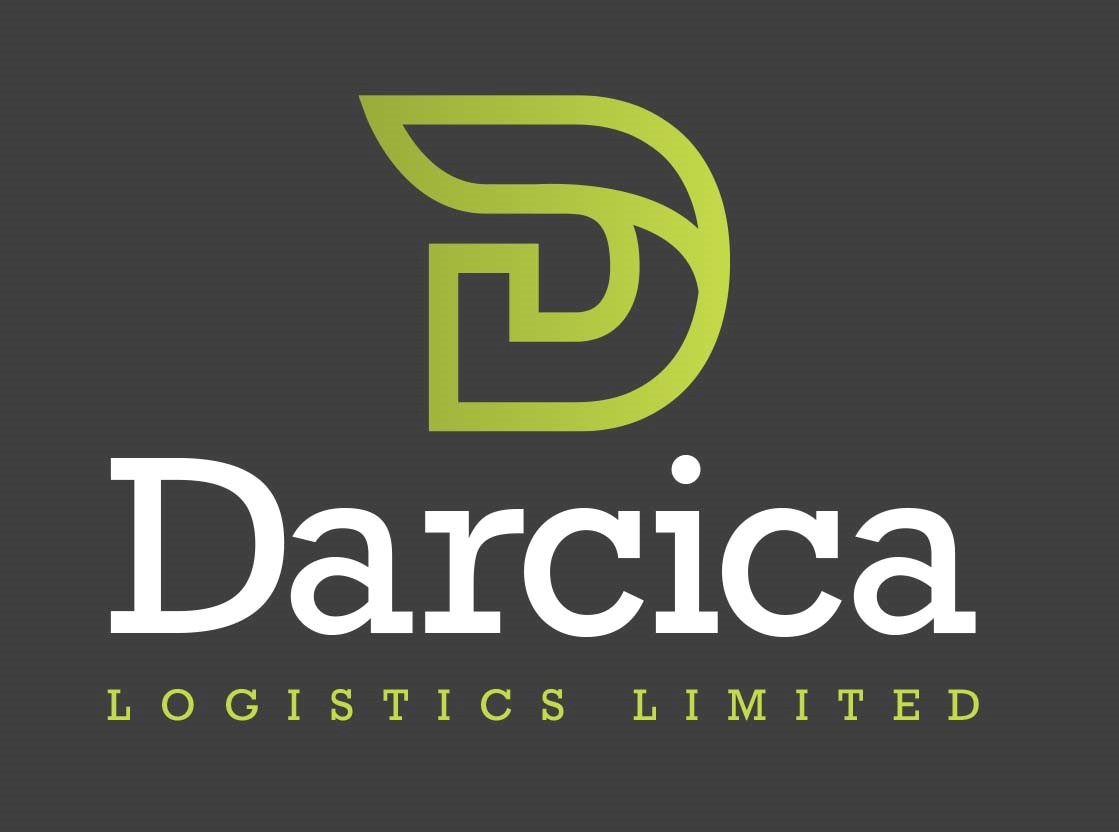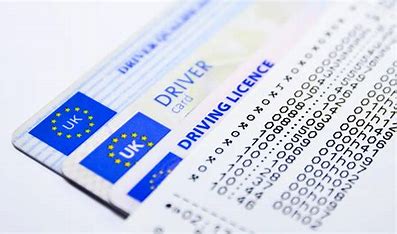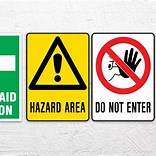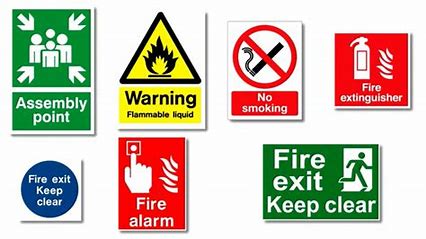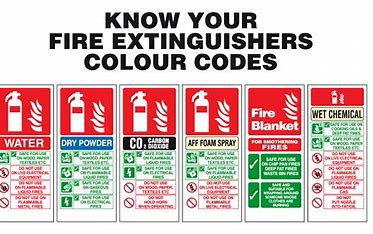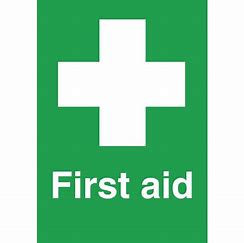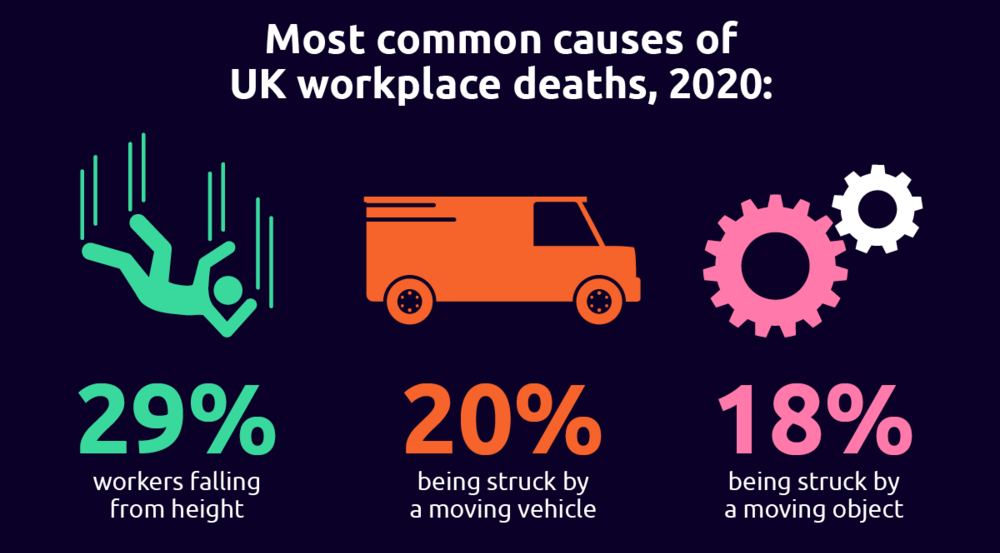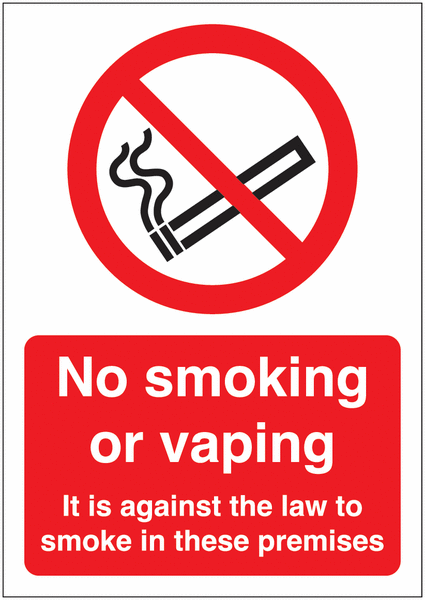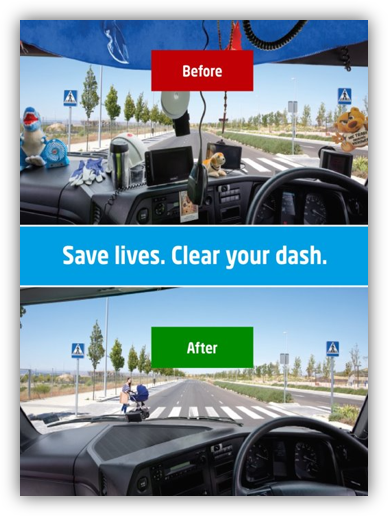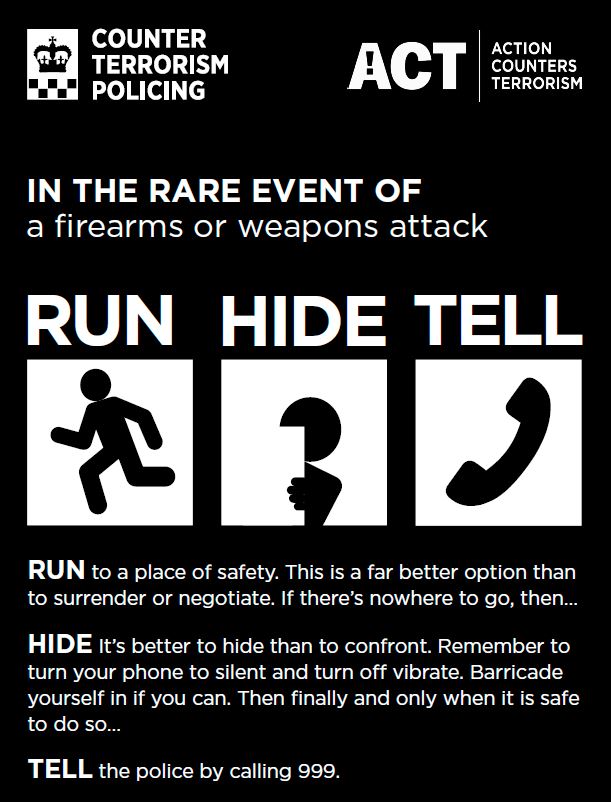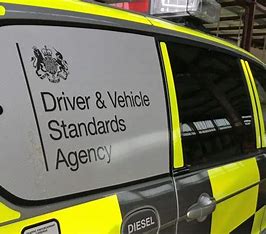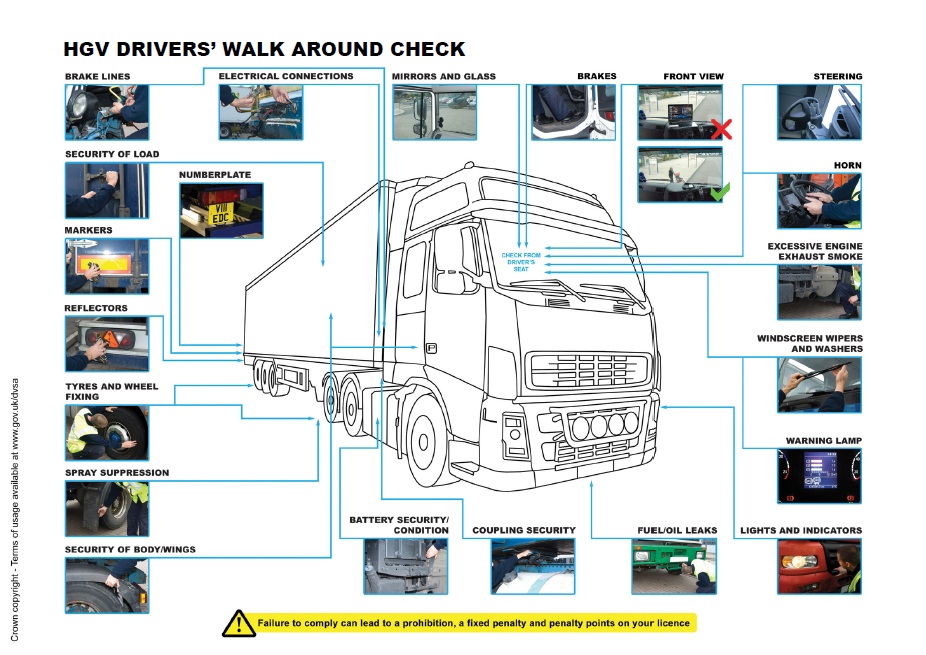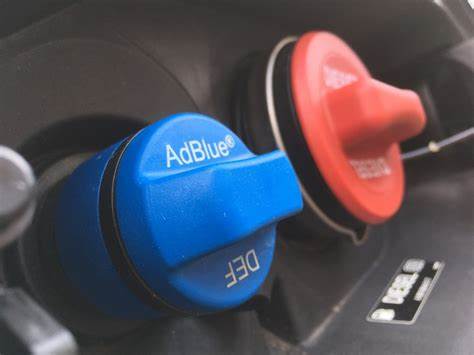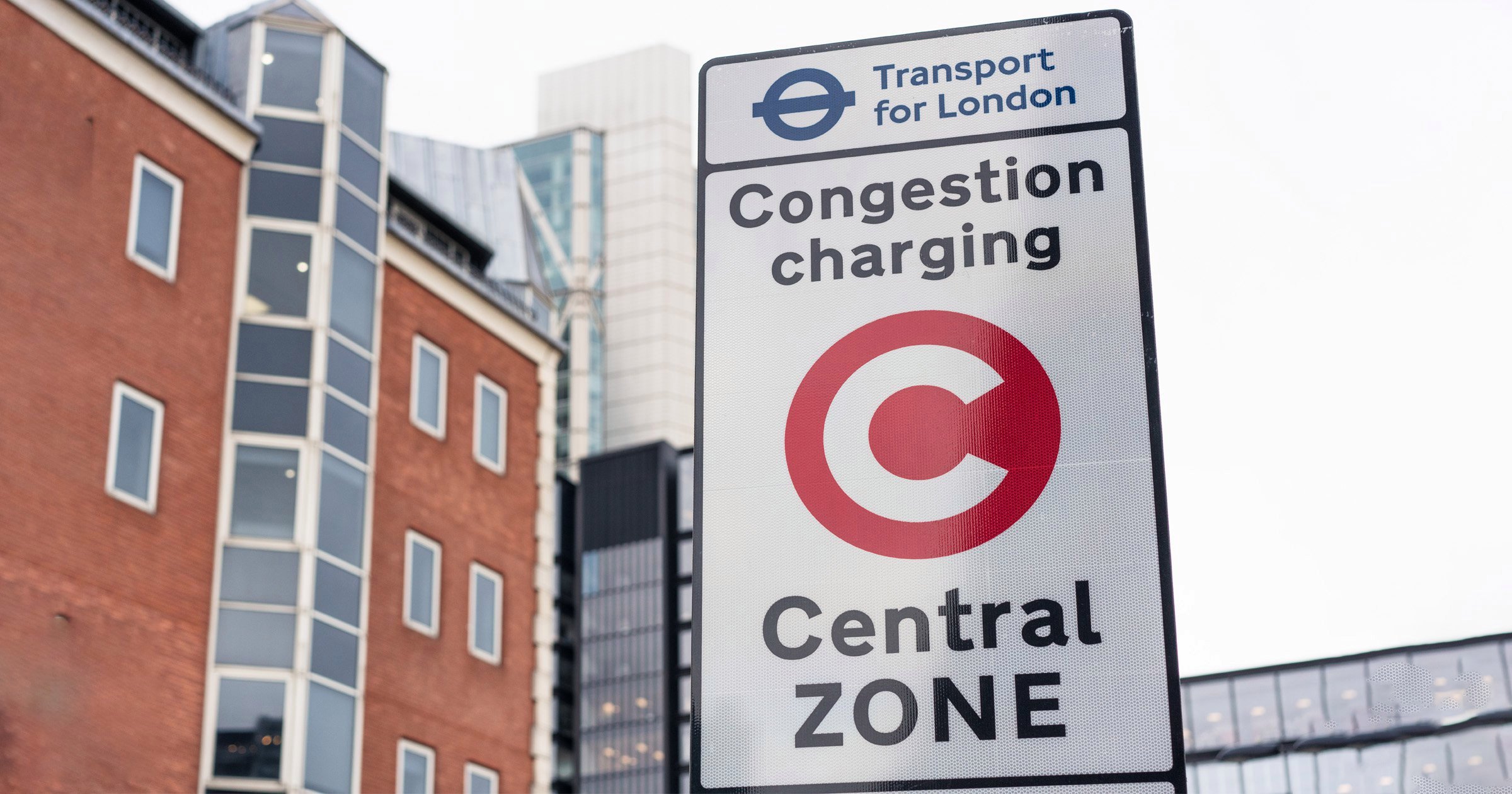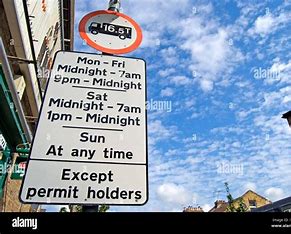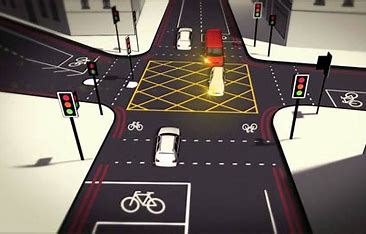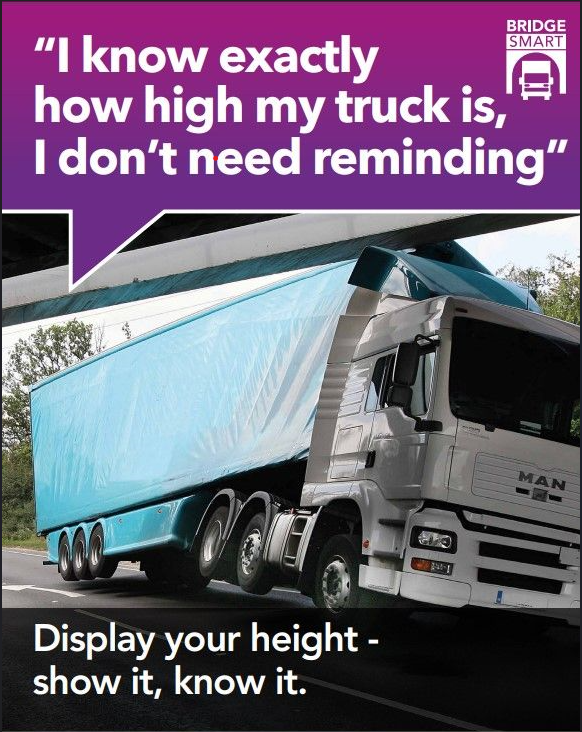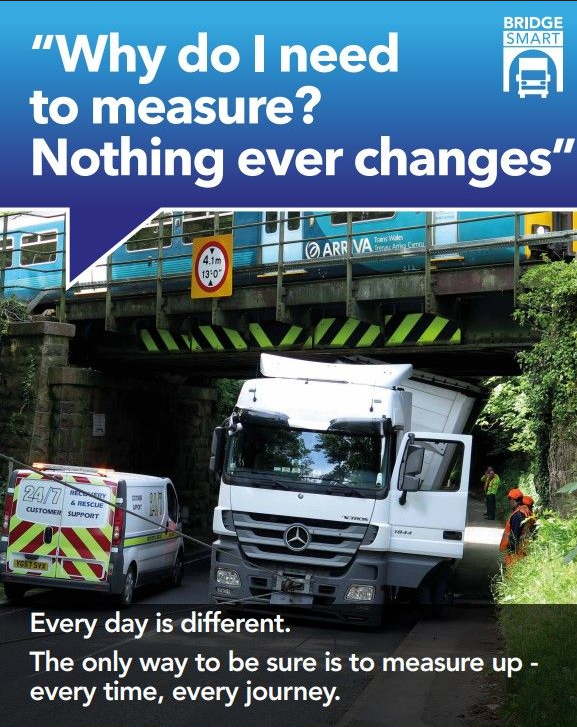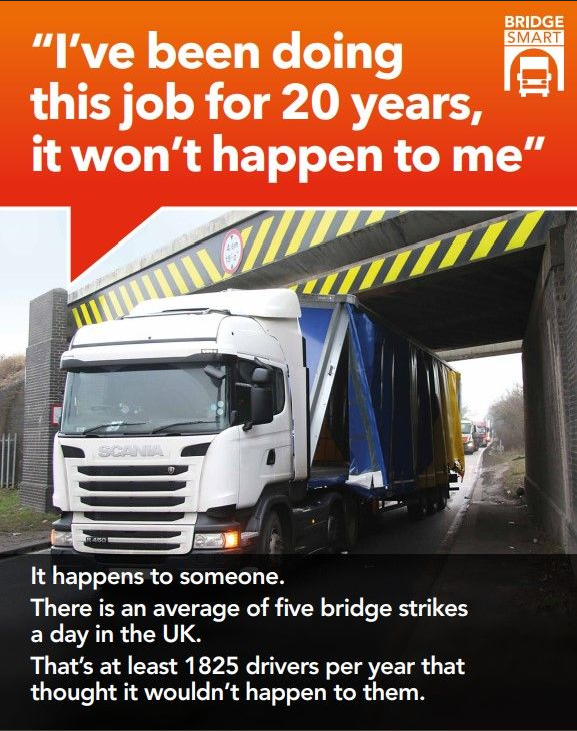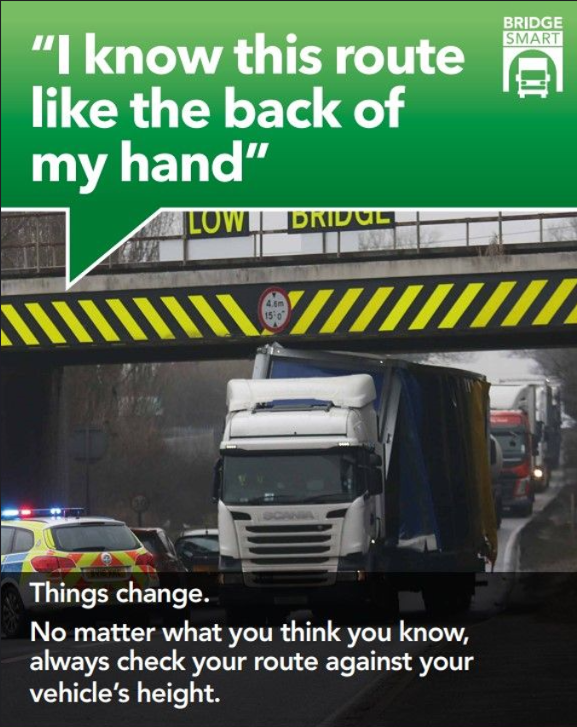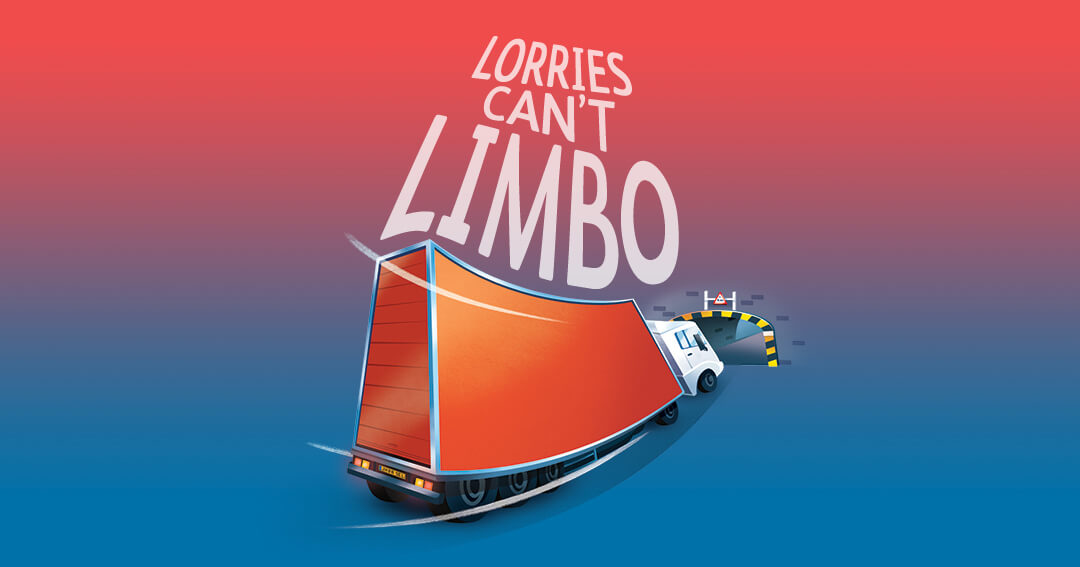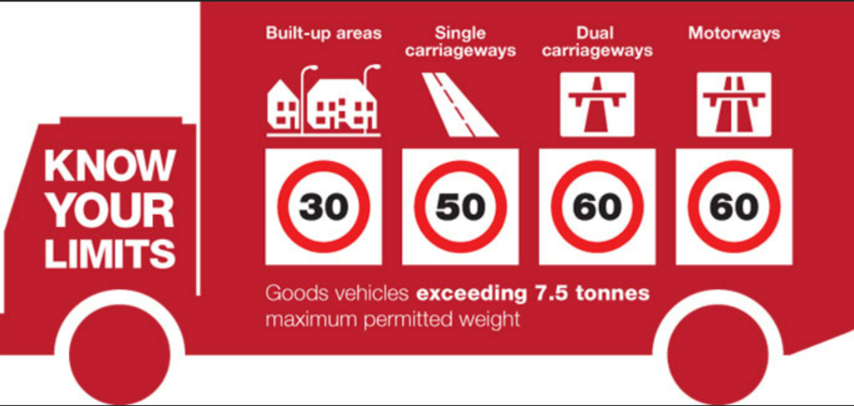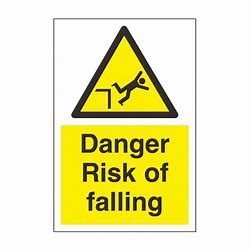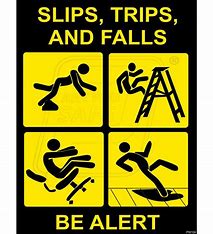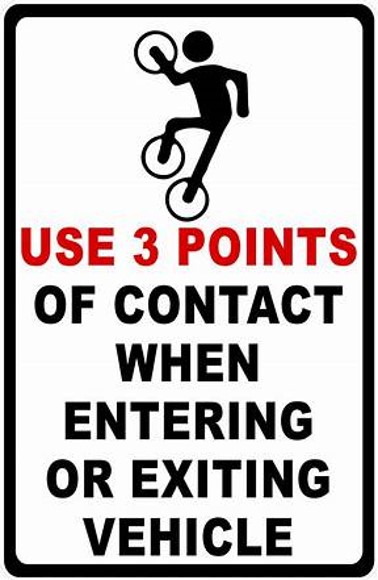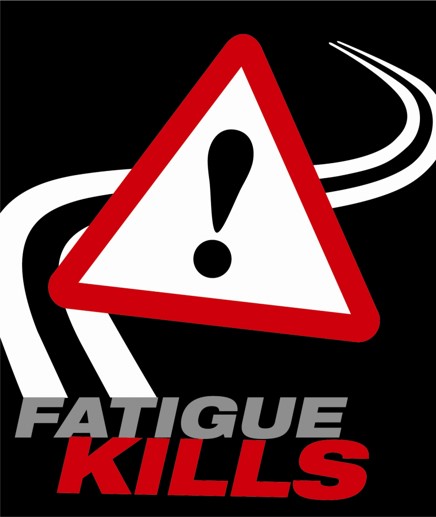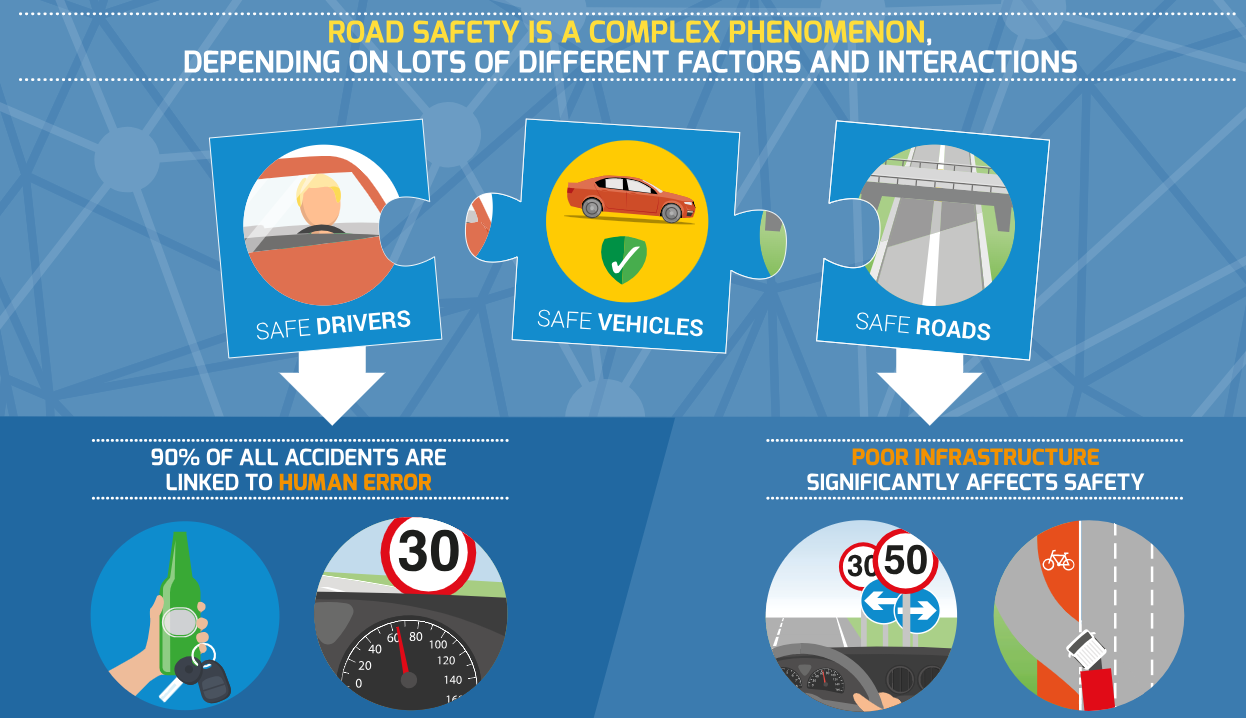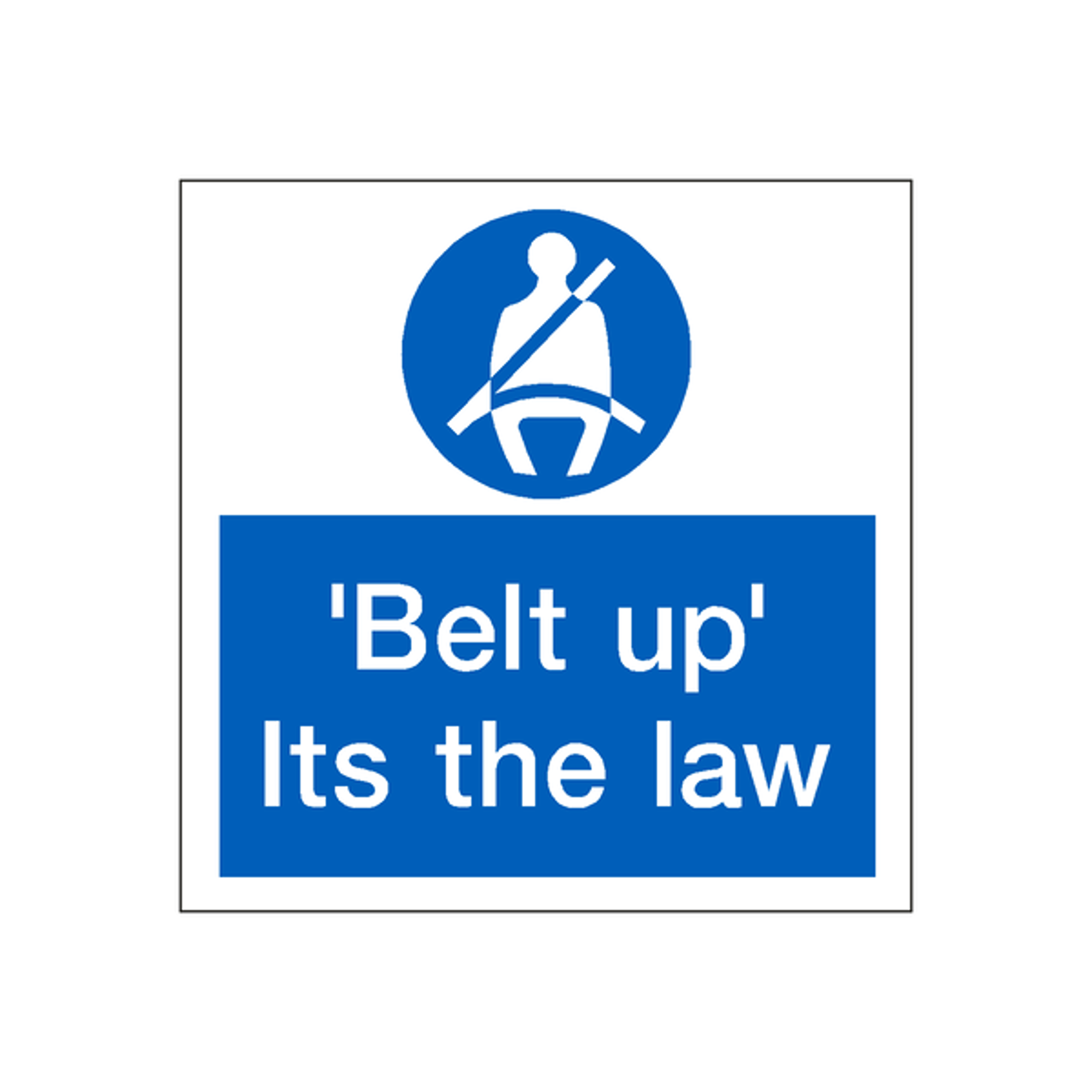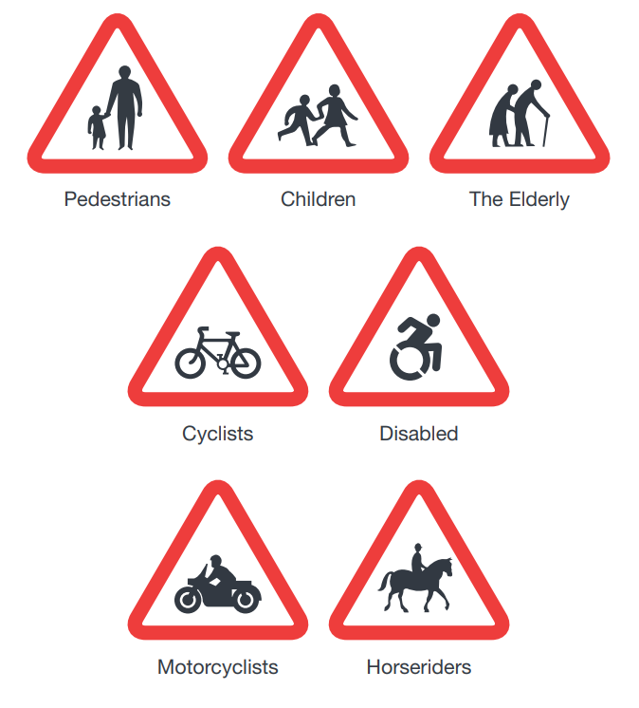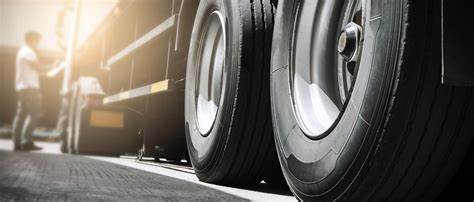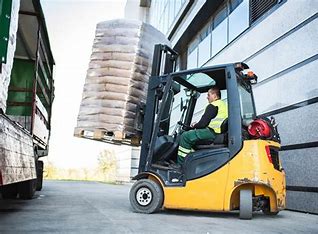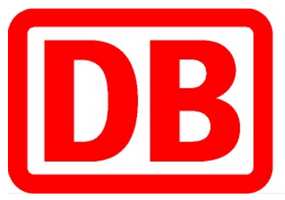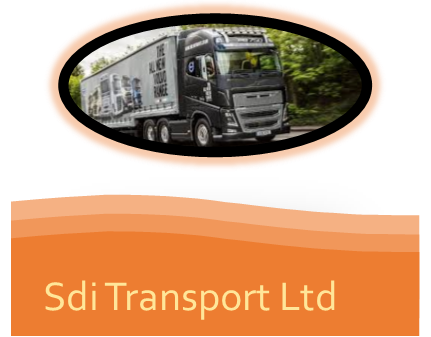Title Page
-
Site conducted
-
Conducted on
-
Prepared by
-
Location
-
Driver Being Inducted
Paperwork Completed
-
Driver Health Declaration Completed
-
Driver Declaration Completed
-
Employee Details Reviewed
Issue of PPE and Company Tablet
-
I confirm that PPE has been issued to me and must be worn at all times when working for Daracica. In the event that PPE is damaged or lost I confirm I will report this to Darcica.
-
I confirm that a digital tablet has been issued to me and must be used to carry out my role. In the event that my digital tablet is damaged or lost I confirm I will report this to Darcica.
Licence Details
-
-
I confirm the most recent copy of my driver qualification card has been provided
-
Please take a clear photo of the driver qualification card provided
-
I confirm the most recent copy of my driving licence has been provided
-
Please take a clear photo of driving licence (front and back)
-
I confirm the most recent copy of my Driver Card (Tacho/Digi Card) has been provided
-
Please take a clear photo of the Driver Card (Tacho/Digi Card) provided
-
Does the driver have any driving licence codes on the back of their driving licence? https://www.gov.uk/driving-licence-codes
-
Please write which code(s):
Eyesight Check
-
-
Requirement: To require that drivers are fit to drive, are not impaired and meet the minimum eyesight standard for driving. The driver eyesight check requires drivers (with glasses or contact lenses, if required) to read a vehicle number plate from a distance of 20 metres, or a suitable alternative check (such as an approved Internet Test or Snellen Test)
The frequency of eyesight checks shall be conducted as a minimum:
- Pre-employment or the start of a specific contract (where specified)
- No later than every six months (or during a Refresher Training session or Spot Check)
- After involvement in a blameworthy road traffic collision
Purpose: To ensure drivers maintain a level of skill and ability to exercise proper control of the vehicle and interact safely with other road users.
Any driver failing an eyesight check shall be referred to an optician for an eyesight test. -
If the driver is required to wear glasses or contact lenses, are they wearing them at the time of the test?
Test 1
-
Registration Plate
-
Pass or Fail
-
Comments / Action to be taken:
Test 2
-
Registration Plate
-
Pass or Fail
-
Comments / Action Taken:
Reciept
-
Driver Signature
-
Date
-
Administrator Name
-
Administrator Signature
Health and Safety Induction
-
-
Health and Safety training is a legal requirement for all members of staff. It is therefore company policy to ensure that all employees are given sufficient information, instructions and training to enable them to carry out their duties in a safe manner, with minimum risk to themselves or any others who may be affected by their activities or actions.
Fire Safety
-
-
In the event of an Emergency, it is vital that you:
- Raise the alarm
- Communicate
- Fellow instructions from senior management
- Never put yourself or others at risk
Fire Actions
-
Raise the alarm
-
Alert the fire services on 999
-
Evacuate - leave by the nearest exit
-
Only attack a fire if it is safe and you are trained to do
-
Do not run
-
Do not go back into the building
-
Go to your nominated assembly point
-
Only return the building when a senior manager gives authorisation
Fire Equipment
-
Only use fire equipment if it safe and you are trained to do so. Remember, do not put yourself or others at risk at any time. Always check the banding on each Fire Extinguisher for what type of fire it can be used on.
-
Information on what each type of Fire Extinguisher can be used for is as follows:
-
Note: For Co2 extinguishers, these produce fumes which can asphyxiate if used in confined spaces. Ventilate the area as soon as the fire has been controlled.
-
Confirm knowledge of Darcica Logistics Firemarshalls
First Aid
Location of First Aid Kit
-
In the main office on the wall
Nominated First Aiders
-
Conor James
-
Rob Lightfoot
-
Emergency Contact Numbers
-
Police/Ambulance/Fire - 999
-
NHS 111 for Non Emergencies - 111
-
Bupa Emotional Health & Wellbeing Line - 0800 269 616
-
Samaritans - 116 123
-
Anti-Terrorist Hotline - 0800 789 321
-
HSE - 01245 706 200
Smoking
-
-
Smoking is not allowed in any enclosed workplace, public building or on public transport in the UK. Smoking is not allowed in any work vehicle that more than one person uses, which includes all of our vehicles. This is the law.
-
If you are caught smoking in the workplace by the Police or DVSA, workers can be fined up to £200. Any drivers caught smoking may also face disciplinary actions.
-
You must only ever smoke in designated smoking areas.
Use of Mobile Devices and Mobile Phones
-
As of 25th March 2022, stricter laws governing the use of mobile phones while driving have come into effect, making it illegal to use a mobile phone while at the wheel in nearly all circumstances. It is now illegal to hold and use a phone, satnav, tablet/iPad, or any device that can send or receive data, while driving, whether online or offline.
-
Drivers are now deemed to be breaking the law if they use a mobile phone (or any other device mentioned above) for “any use”, including taking photos or videos, changing music, playing games, changing a Satnav. The law still applies if you’re stopped at traffic lights or queueing in traffic.
-
The only time you can use a device held in your hand is if you need to call 999 in an emergency and it is unsafe or impractical to stop.
-
You can use devices with hands-free access, as long as you do not hold them or get distracted by them at any time during usage. Hands-free access means using, for example: a Bluetooth headset, voice command, a dashboard holder or mat, a windscreen mount, a built-in satnav.
-
These rules even go as far as just touching the screen of a device to view a notification, and the penalties are not light. You can receive 6 penalty points and a £200 fine if you hold and use a phone or any of the above devices, or get a maximum fine of £2,500 if you’re driving a lorry (£1000 in a car) if you get taken to court, where you could also be banned from driving. You can also get 3 penalty points if you do not have a full view of the road and traffic ahead.
-
While driving, phones should be out of reach if being used as a satnav, and only handsfree should ever be used. Keep your phone out of sight and out of mind while driving. The president of the AA, Edmund King, says “The best thing to do is to convert your glovebox into a phonebox. We all need to keep our hands on the wheel and our eyes on the road”.
Clear Dashboard
-
-
Dashboards must be clear and clutter free as this can also lead to a roadside stop.
Security & Counter Terrorism
RUN
-
Escape if you can
-
Consider the safest options
-
Is there a safe route? RUN. If not then HIDE
-
Can you get there without exposing yourself to greater danger?
-
Insist others leave with you
-
Leave belongings behind
HIDE
-
If you cannot RUN, HIDE!
-
Find cover from gunfire e.g. substantial brickwork / heavy reinforced walls
-
If you can see the attacker, they may be able to see you
-
Cover from view does not mean that you are safe. Bullets go through glass, brick, wood and metal.
-
Be aware of your exits
-
Try not to get trapped
-
Be quiet. Put your phone on silent and turn off vibrate
-
Lock/barricade yourself in
-
Move away from the door
TELL
-
Call 999 - WHat do the police need to know? If you cannot speak or make noise listen to the instructions given to you by the call taker
-
Location - Where are the suspects?
-
Direction - Where did you last see the suspects and where did they go?
-
Descriptions - Describe the attacker(s), numbers, features, race, clothing, weapons etc.
-
Vehicles - If vehicles are being used: registration, type of vehicle, colour etc.
-
Further information - Casualties, type of injury, building information, entrances, exits, hostages etc.
-
Stop other people entering the building if it is safe to do so
When you deliver
-
Make sure you are delivering to the right place (check collection and delivery against the notes)
-
If the delivery instructions are changed, get written confirmation of the changes from senior staff at the delivery address and from your employer
-
Make sure there is a clear signature and printed name on the POD
-
Check the quantities and weights match the collection and delivery notes
-
Monitor unloading operations personally if possible
-
Check the load seal is intact and the number is the same as on the delivery note
-
Look out for suspicious persons in the area and damaged CCTV
-
You must never leave your vehicle unattended with the doors unlocked or the keys left in the vehicle.
-
Always remove the keys from your vehicle and lock the vehicle to prevent theft.
What to do if you are involved in a security or terrorism related incident?
-
As an experienced driver you have a feel for what is and isn't quite right. If you have any concerns over suspicious activity or potential crime you should contact the police or other authorities.
Remember: Stay safe, do not put yourself or others in danger. -
Report any of the above by calling:
-
If urgent: 999
-
Less urgent: 101
-
Crime stoppers: 0800 555 111
-
HGV Related Crime: 02380 478 311
-
Anti-Terrorist Line: 0800 789 321
Receipt
-
I understand and will adhere to all of the above guidlines and laws
-
Driver name & signature
-
Date
-
Trainer name and signature
-
Date
Vehicle checks, Maintenance & Driver Responsibilities
Walk around checks
-
You are responsible for making sure your vehicle is safe to drive.
-
You MUST carry out a walkaround check of the vehicle (both unit AND trailer) before your first journey of the day, without fail, to make sure it’s safe. You will use the pre-drive app to complete the walkaround checks and to report any defects. Please ensure you are carrying out a daily walk around check for a minimum of 15 minutes. The police and DVSA officers can stop you to do checks on your vehicles. You can be stopped from driving until you fix any problems they find, or they can issue you with a fine. You can get an unlimited fine and a prison sentence for using an HGV in a dangerous condition.
-
-
If you become aware of defects during your journey, you must find a safe place to stop to assess and report any defects. You must get dangerous defects fixed before you continue your journey. Speak to the your planner (or the out of hours supervisor).
-
Completing a first use walkaround check is a legal requirement in accordance with our operators licences and is not optional. The DVSA and Office of the Traffic Commissioner will take action if we are found to be non-compliant. https://www.gov.uk/guidance/carry-out-daily-heavy-goods-vehicle-hgv-walkaround-checks
-
You must also do an end of use walk around check using the pre-drive app
-
Has the driver been issued a log in for Pre-Drive app?
-
Issue log in details
-
Has the driver been shown how to use the Pre-Drive app?
-
Has the driver been shown how to recall their completed walk around check?
-
Show driver how to recall their completed walk around check
Receipt
-
I understand and will adhere to all of the above guidlines and laws
-
Driver name and signature
-
Date
Diesel and Adblue
-
-
As an operator we are legally obliged to use and record AdBlue usage. So, you as a driver, are required to record each time you top up. Recording your AdBlue is easy, and this will be shown to you.
-
If you share a vehicle, or if it will getting used by a cover driver, you must leave the Diesel and AdBlue tank no less than half full. Always leave the vehicle how you would expect to find it.
-
Adblue is available at the Bicester depot. Please only fill up at the Bicester depot and not at fuel stations. Authorisation must be approved to fill up Adblue at fuel stations.
-
It is illegal to run out of AdBlue while on the road.
Vehicle Cleanliness
-
Having a clean and clutter free interior is not all about having a nice truck, this is also a legal requirement. Annex 6 of the Highway Code states that "windscreens and windows MUST be kept clean and free from obstructions to vision". If you are pulled over and are found to have a cluttered/obstructed view, Vision Obscured Offences for normal motorists are £50 and 0 points. However a Dangerous Condition is a £100 fine and 3 points. A Dangerous Condition in a commercial vehicle could lead to the company, and even the driver, going to the Office to the Traffic Commissioner.
-
Always leave the vehicle how you would expect to find it and have respect for your colleagues.
-
Each time you driver you are representing Darcica Logistics and are acting as an ambassador to the company.
-
Has vehicle cleanliness been explained to the driver?
Congestion Charges
-
-
The only Chargeable zones which Darcica pays for automatically is the London Congestion Zone. If you wish to use any other zones which have a Charge associated with them (for example Dartford Crossing, The Mersey Gateway or M6 Toll), you must receive authorisation from the Transport Office, otherwise any costs will be passed on to you.
-
While Darcica pays for the London Central Congestion Zone Charge, this area should be avoided unless absolutely necessary, and is ONLY for Darcica Logistics vehicles.
Confirmation of understanding
-
I confirm chargeable zones have been explained to me and that I adhere the above.
-
Driver Name & signature
-
Date
Time & Weight Restrictions
-
-
When driving you must always pay attention to road signs, especially signs with vehicle specific restrictions.
-
If you unnecessarily drive through a Time or Weight restricted area, you may receive a Penalty Charge Notice.
-
In London, the London Lorry Control Scheme is in action. Meaning that HGVs can only enter London during the following times: - Monday to Friday 7am - 9pm - Saturday 7am - 1pm If access is required outside of these times, permitted routes without restrictions can be found here: https://lcspermits.com/?_ve=schememap#schememap Similar schemes will undoubtedly be rolled out into other cities soon.
-
If you are ever in doubt about your route or when you can access a site, please speak with the transport office.
-
Have weight and time restrictions been explained to the driver?
-
I confirm that weight and time restrictions have been explained to me and that I am liable to pay any penalty charge notices I may incur.
Yellow Box Junctions
-
-
A yellow box junction is a traffic management tool designed to keep traffic flowing smoothly, particularly at busy intersections such as crossroads or T-junctions. These junctions are marked on the road with distinctive yellow hatching and are often accompanied by other traffic control measures like traffic lights. Stopping in a yellow box could cost you £130.
-
I confirm that yellow box junctions have been explained to me and that I am liable to pay any penalty charge notices I may incur.
Height Restrictions
-
-
Similar to Time and Weight Restrictions, it is imperative that you ALWAYS abide by Height Restrictions. Bridge strikes cost the UK tax payer £23m a year.
-
-
Always plan your route first, do you know where the site is? Postcodes do not always take you to precise locations. Around 1,800 vehicles crash into rail bridges each year.
-
-
Checking the height of your vehicle and the height indicator is mandatory.
-
-
If you are using a satnav, this must be set the dimensions of your vehicle including weight and height dimensions. A car satnav must not used for driving a HGV.
-
-
I confirm that vehicle height restrictions have been explained to me and I confirm that I understand and will adhere to the above.
-
Date:
Speeding
-
-
Speeding is NEVER acceptable.
-
A speed limit is exactly that: a LIMIT, not a target
-
If you are found to be speeding, disciplinary action may be taken
-
If you are caught speeding by a speed camera or other device and Darcica are informed by the police, your details will be passed on.
-
Check your speedometer regularly, especially when leaving high speed roads or when going downhill.
-
Recognise hat makes you speed - keeping up with traffic, overtaking or being tailgated.
-
Know the limits - look for signs, especially at junctions
-
Assume lamp posts mean 30mph, until signs say otherwise, but remember it could be 20mph
-
Concentrate. Distracted drivers speed.
-
Give yourself time - there's no need to speed and you will not get there any quicker
Manual Handling
-
-
Maintain a good posture when lifting, carrying and sitting
-
Know your limits when lifting and carrying
-
Do not rush. No job is so important that we can't take the time to perform it safely
-
I confirm that I have and read and understood the above and induction presentation and will adhere to the training provided to me.
Working at Height
-
-
Always ensure you have adequate tread on the soles of your boots to prevent slipping when working from height
-
NEVER climb on top of your vehicle/trailer on the public highway or on any customer sites
-
NEVER jump down from your vehicle or a raised platform
-
I confirm that I have read, understood and will comply with the above.
Operating a Tail Lift
-
I confirm that I have received the Palletways night driver induction (if applicable)
-
I confirm that I have watched and understand the Palletways tail lift training video.
-
I confirm that I will follow the processes within this video.
Slip, trips and falls
-
-
Each year, over 20% of reported injuries occur either through a slip, trip or fall in the workplace, some of these result in fatalities.
-
We all have a duty of care and obligation to ensure our work environment is as safe as possible.
-
Clear up waste materials as you create them. Lightweight waste should be bagged or bundled, and nails removed from broken pallets
-
If you are using vehicle oils and lubricants, ensure that you have a means of effectively cleaning up any spillages
-
Be aware of the increased risks of tripping as the level of natural light fades: ensure that all equipment and materials are stored in a safe location
-
Have a conscience; it is not just about your legal responsibilities. We all have a moral responsibility too
-
Do not leave tools, equipment or unused materials lying about on the floor.
-
As far as possible, route cables and airlines safely, if cables must be routed at floor level, try to avoid pedestrian walkways
-
If the site is muddy or has debris, scrape off your boots before climbing onto vehicles or walking anywhere else where it might be a danger to others
-
I confirm that I have read, understood and will comply with the above.
Falls from Vehicles
-
It is your responsibility to ensure your vehicle is always in a safe state and to reduce the likelihood of a fall from vehicle.
-
You must carry out thorough pre-use checks on your vehicle, checking steps, handholds and load area are in good condition
-
You must Keep the load area tidy – pick up loose ropes, packaging etc
-
You must Check the load area conditions for rainwater and condensation and in winter for ice
-
You must report broken boards, runners and any other objects that could cause a trip on the load area
-
You must check that any load restraint straps are safely stored so they do not cause a trip hazard, particularly on curtainsiders
-
Clean up spills and dirt such as diesel or mud on the catwalk or load area to stop people slipping
-
-
You must always use three points of contact when entering and exiting your vehicle
-
Take a few seconds to climb down from the cab, load area or catwalk, face the vehicle and use steps and handholds
-
Report any missing or damaged equipment
-
Before stepping off the vehicle, check for uneven surfaces such as potholes or kerbs which may cause you to slip
-
NEVER JUMP DOWN. This is bad for your knees, and you are more likely to fall
-
Always adhere to your training and follow the company’s safe ways of working, particularly if you use tails lifts
-
Follow safe systems of work for loading and unloading vehicles
-
Keep the soles of your footwear clean to reduce the risk of slipping
-
I confirm that I have read, understood and will comply with the above.
Drugs & Alcohol
-
You must not be under the influence of drugs or alcohol at any time when on shift
-
Random D&A Tests are carried out by Darcica and by customers on customer sites.
-
Always report any prescribed medication that could affect your ability to drive to HR.
-
You have a duty to ensure that you are fit for work. It is a criminal offence to drive whilst unfit or to not report any condition that affects your ability to drive safely. It may invalidate insurance cover and you could be fined up to £1000 if you knowingly conceal information about your fitness to drive.
-
I confirm that I have read, understood and will comply with the above.
Mental Health & Wellbeing
-
-
-
Fatigue is a physiological state of reduced mental or physical performance capability resulting from sleep loss, or extended wakefulness that can impair alertness and ability to safely operate or perform safety-related duties.
-
To manage fatigue you must have appropriate rest breaks and regularly get 7-8 hours sleep before starting work
-
You must drink enough fluids to maintain hydrated
-
Do not rely on stimulants - coffee and nicotine only provide a temporary boost
-
Diet – eat a balanced diet with foods that provide slow-release energy
-
I confirm that I have read, understood and will comply with the above.
Work Related Road Risk
-
-
Road transport is a core activity of our business you are not only responsible for your own safety, but also responsible for the safety of others. You are therefore required to operate vehicles in a manner that is safe and responsible at all times, no matter how reckless others may act.
-
If you do not drive in a professional manner or conduct your duties legally, efficiently, and safely you can significantly affect the risks you pose which can lead to a serious incident or collision. It could also cost you your driving licence or even your job.
-
Statistically 5 people will die on our roads each day. Statistically 50-60 people will be seriously injured, many with life-changing injuries. But they’re not statistics. That’s 5 families devastated. We can, should and must drive change together.
-
You must be aware of your legal responsibilities
-
You must operate within the law
-
You must observe all road signs, road markings and directions
-
You must obey the rules of the road and all restrictions, instructions and limits
-
You must drive courteously, calmly adopting a ‘defensive’ driving style
-
You must have consideration for other road users – remember you are professional drivers
-
If you commit an offence whilst driving on company business, you will be liable for any consequences arising, this includes fines, penalties and prosecutions
-
Any driving licence endorsements, penalty points or disqualification received, whether driving on company business or privately, must be notified to your line manger immediately
-
I confirm that I have read, understood and will comply with the above.
Seatbelts
-
-
Seat belts are not just a good idea, they are required to be worn by law.
-
You can be fined up to £500 if you don’t wear a seat belt when you’re supposed to.
-
Seat belts save lives.
-
I confirm that I have read, understood and will comply with the above.
Vulnerable Road Users
-
-
Take extra care at schools particularly at dropping off and picking up times
-
Take extra care around children who may run into the road as they leave school or exit from buses, coaches or cars
-
Take extra care near care homes, hospitals and doctors
-
Take extra when turning into roads where pedestrians may have started to cross; they have the right of way
-
Take extra care at junctions where motorcycles and scooters may suddenly appear as they overtake
-
Take responsibility when overtaking. You should give cyclists as much room as you would when overtaking a car
-
Keep advanced stop lines at junctions clear
-
Make eye contact with cyclists and pedestrians so you know they have seen you
-
Don’t assume a cyclist or pedestrian has heard you, they may be deaf, distracted, or listening to music though headphones
-
Check and re-check your mirrors and blind spot monitor before moving off, braking, and turning
-
The size of a HGV means a collision with a Vulnerable Road User can results in catastrophic injury
-
To help prevent a collision with a Vulnerable Road User your vehicle safety equipment must be in good working order
-
Stay in control of your vehicle – concentrate on your driving and don’t get distracted
-
Plan your manoeuvres – allow enough space and time, particularly for turning left and at roundabouts
-
When reversing or conducting difficult manoeuvres, always use a banksman
-
I confirm that I have read, understood and will comply with the above.
Reversing and Manoeuvring
-
-
Modern sites are designed to ensure minimum amount of reversing as possible. You must always adhere to your training and follow the company’s safe ways of working.
-
If in doubt do not reverse. If it is safe, Get Out And Look (GOAL)
-
Ensure your mirrors are clean and set for maximum vision
-
Use a banksman as a guide but ensure the banksmen knows the appropriate signals
-
Ensure reversing lights are serviceable at all times
-
Be constantly aware of pedestrians and other moving vehicles
-
Check the ‘blind spots’ behind and to the sides
-
I confirm that I have read, understood and will comply with the above.
Forward Manoeuvring
-
Do not conduct any forward manoeuvre unless it is safe to do so.
-
Ensure a clear view through the windscreen and to not obstruct view by objects placed on the dashboard
-
Be aware of the vehicle’s height, width, and length dimensions
-
Be constantly aware of pedestrians and other moving vehicles
-
Be aware of the vehicle’s turning circle and its manoeuvring capability
-
If in doubt STOP
-
Check the ‘blind spots’ behind and to the sides
-
I confirm that I have read, understood and will comply with the above.
Tyre Management
-
-
Drivers face stiff penalties for worn, bald or defective tyres and could even lose their licence.
-
Each bald or defective tyre carries a fine of up to £2,500 and three penalty points so if all are not up to standard you could be looking at 12 points and an automatic ban.
-
The current tread depth legislation requires that vehicles over 3.5t tyres must have a minimum of one mm of tread in a continuous band throughout the central three-quarters of the tread width and over the whole circumference of the tyre. The same regulation applies to regrooved tyres.
-
Make sure your tyres are correctly inflated before you set off on your journey. Correctly inflated tyres offer less resistance on the road, improve fuel economy, give greater stability, and reduce the risk of accidents.
-
Do not over-inflate your tyres as this can reduce the vehicles handling and cause high wear in the centre of the tread
-
Check that there are no exposed cords. If there are, advise your fleet manager immediately as the tyre is unsafe for use.
-
Look out for any bulges, lumps or cuts to the tread and sidewalls and remove any stones and other embedded objects.
-
You must check tyres as part of your daily walkaround check.
-
I confirm that I have read, understood and will comply with the above.
-
undefined
Prohibitions
-
As a commercial driver, you might be asked to stop by the Police or a Driver and Vehicle Standards Agency (DVSA) officer.
-
It is your responsibility to make sure your vehicle is roadworthy.
-
As a commercial driver, committing a motoring offence means you could also get a fixed penalty. The majority of fixed penalties follow a graduated system. The type of fixed penalty you get would generally depend on the actual circumstances of the incident and the seriousness of the offence committed.
-
Adopting best practice in vehicle maintenance and drivers’ hours prevents the likelihood of receiving prohibitions.
-
Effective daily walk around checks, prompt defect reporting and compliance in relation to tachographs and drivers’ hours rules prevents the likelihood of receiving prohibitions.
-
I confirm that I have read, understood and will comply with the above.
Planning & Routing
-
-
If you use a sat nav it must include the dataset for your vehicle and its dimensions. You must not use a sat nav that is designed for a car.
-
You should be aware of high-risk areas such as cycle routes and schools. Avoid them if you can but if you cannot take extra caution for vulnerable road users including children.
-
Routes are in place specifically for your vehicle, any deviation must consider the size of your vehicle.
-
You should be aware of strategic and local preferred routes, any vehicle height and weight restrictions and locations of driver and parking facilities.
-
I confirm that I have read, understood and will comply with the above.
Vehicle Loading
-
-
Unsafe loads on vehicles injure more than 1,200 people a year and cost UK businesses millions of pounds in damaged goods.
-
Unsafe loads increase the risks in the transport operation and damages the reputation and viability of this business.
-
It is your legal duty through Construction and Use Regulations to ensure your load is secured in such a way that it is not a danger to other road users.
-
Failure to do so may cause serious injury and you can lose your licence.
Safe Loads & Distribution
-
Always use safe stacking/packing practices and do not accumulate additional unnecessary items
-
Ensure the load is stable keeping the center of gravity as low as possible and put heavy items in the center of the vehicle and ensure different items of the load cannot move separately
-
Headboards and bulkheads should be sufficiently robust to resist movement, if there is a gap between the load and the headboard, the load can shift forward. If there is a gap, use dunnage or another method of forward restraint
-
Lashings should be strong enough (rated) to secure the load, certain types of rope may be used but they must meet transport safe working load requirements
-
Loads should be secured to the vehicle chassis, do not rely on curtains to secure a load unless it is clearly labelled as a load restraint system
Safe Loading & Unloading
-
Use dedicated loading bays where possible, preferably with raised loading points
-
Use lifting equipment if practicable
-
Use correct manual handling techniques
-
Always attempt to make pre-delivery arrangements and only work with people who are trained
-
Do not walk backwards in the vehicle and do not jump off!
-
Use the vehicle’s hazard lights in busy areas
